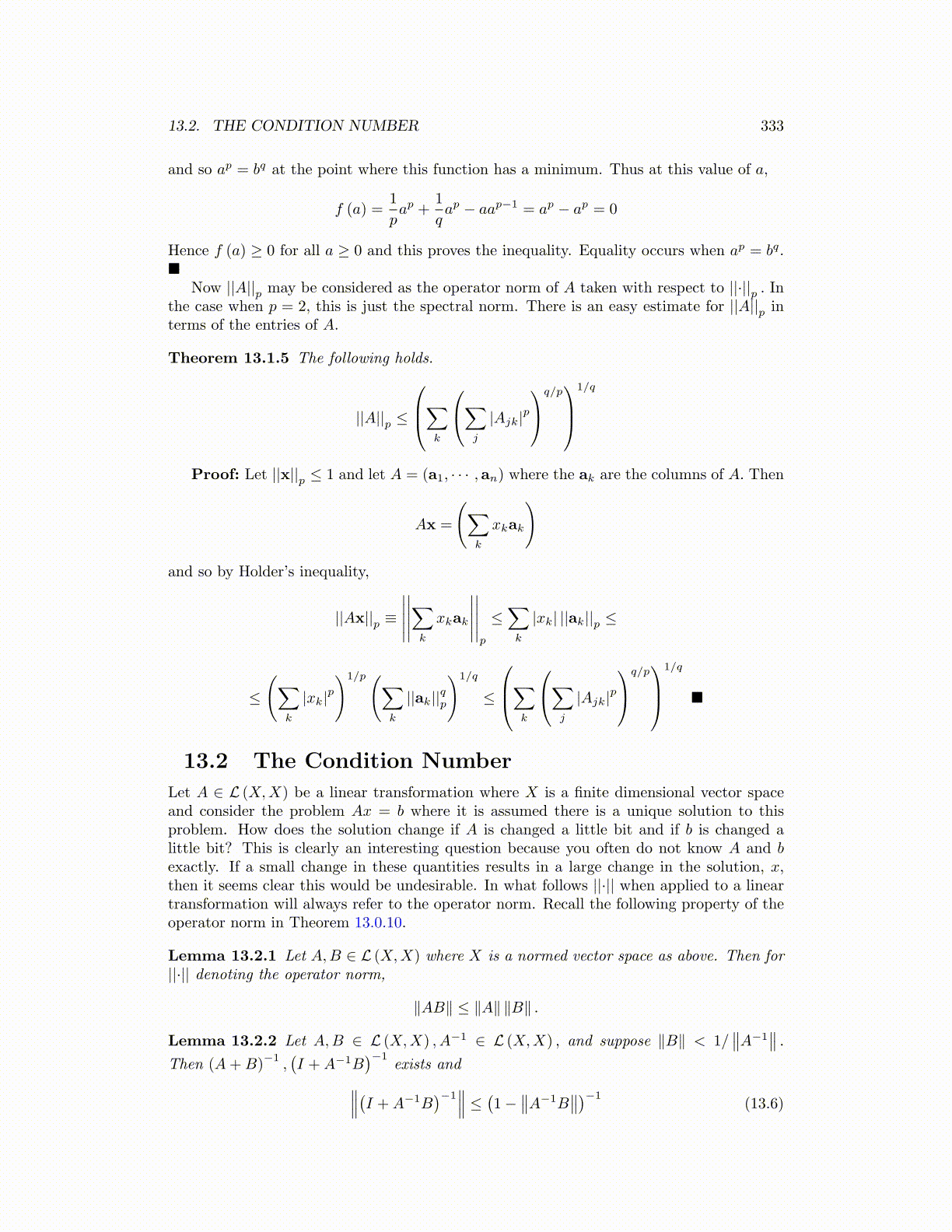
13.2. THE CONDITION NUMBER 333
and so ap = bq at the point where this function has a minimum. Thus at this value of a,
f (a) =1
pap +
1
qap − aap−1 = ap − ap = 0
Hence f (a) ≥ 0 for all a ≥ 0 and this proves the inequality. Equality occurs when ap = bq.■
Now ||A||p may be considered as the operator norm of A taken with respect to ||·||p . Inthe case when p = 2, this is just the spectral norm. There is an easy estimate for ||A||p interms of the entries of A.
Theorem 13.1.5 The following holds.
||A||p ≤
∑k
∑j
|Ajk|pq/p
1/q
Proof: Let ||x||p ≤ 1 and let A = (a1, · · · ,an) where the ak are the columns of A. Then
Ax =
(∑k
xkak
)
and so by Holder’s inequality,
||Ax||p ≡
∣∣∣∣∣∣∣∣∣∣∑
k
xkak
∣∣∣∣∣∣∣∣∣∣p
≤∑k
|xk| ||ak||p ≤
≤
(∑k
|xk|p)1/p(∑
k
||ak||qp
)1/q
≤
∑k
∑j
|Ajk|pq/p
1/q
■
13.2 The Condition Number
Let A ∈ L (X,X) be a linear transformation where X is a finite dimensional vector spaceand consider the problem Ax = b where it is assumed there is a unique solution to thisproblem. How does the solution change if A is changed a little bit and if b is changed alittle bit? This is clearly an interesting question because you often do not know A and bexactly. If a small change in these quantities results in a large change in the solution, x,then it seems clear this would be undesirable. In what follows ||·|| when applied to a lineartransformation will always refer to the operator norm. Recall the following property of theoperator norm in Theorem 13.0.10.
Lemma 13.2.1 Let A,B ∈ L (X,X) where X is a normed vector space as above. Then for||·|| denoting the operator norm,
∥AB∥ ≤ ∥A∥ ∥B∥ .
Lemma 13.2.2 Let A,B ∈ L (X,X) , A−1 ∈ L (X,X) , and suppose ∥B∥ < 1/∥∥A−1
∥∥ .Then (A+B)
−1,(I +A−1B
)−1exists and∥∥∥(I +A−1B
)−1∥∥∥ ≤
(1−
∥∥A−1B∥∥)−1
(13.6)